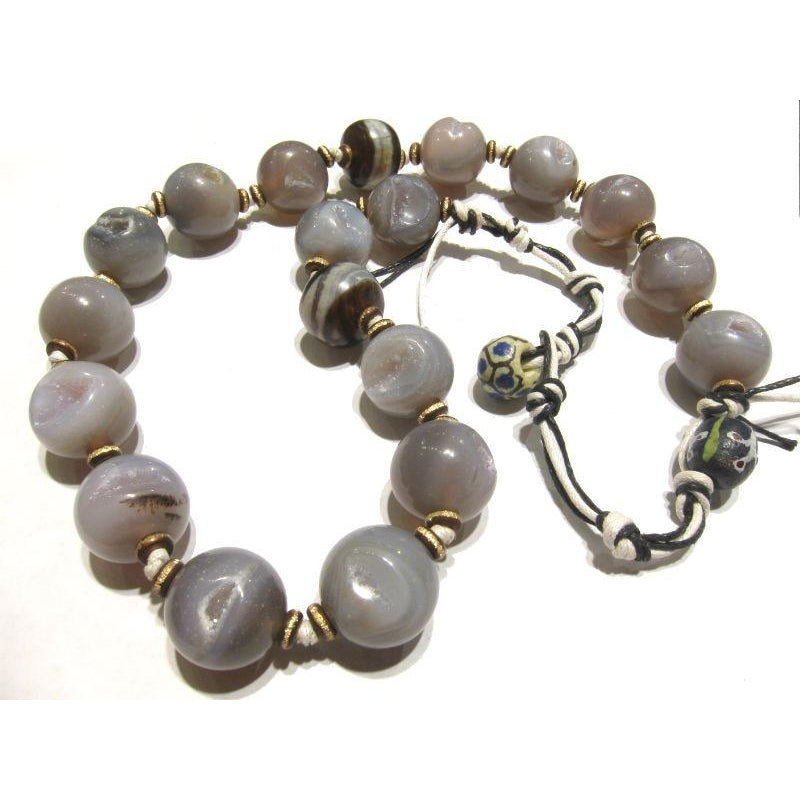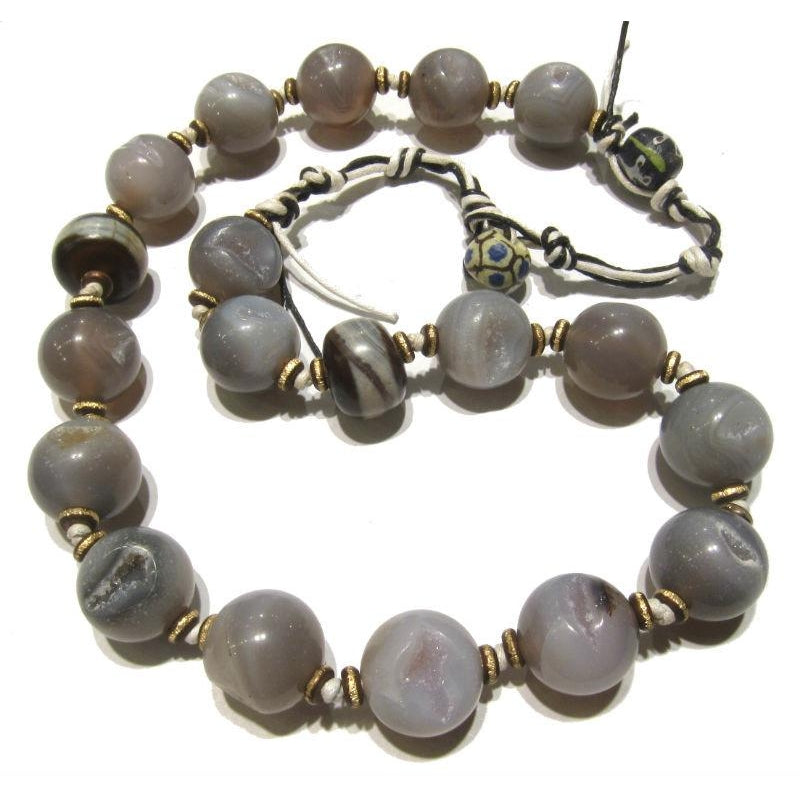Heirloom Chalcedony Agate Bead Necklace, A
- Heirloom Chalcedony Agate Beads, A
- Chalcedony is used as a variety name to refer specifically to the bluish-gray or lavender color of cryptocrystalline quartz. This color is sometimes called “Actual Chalcedony” but the name can be confusing, as other Chalcedonies are referred to by different names, such as Agate, Bloodstone or Carnelian, indicating a color family or
- The term Chalcedony is derived from the name of the ancient Greek town Chalkedon in Asia Minor. In contemporary stone lore, is thought in lore to promote emotional balance and open the heart to kindness and charity.
- Agate is a type of chalcedony in the quartz family, which often occurs in nodular masses in volcanic lava rocks. They form in concentric layers and bands similar to tree trunks and may appear as eyes, scallops, or visually resemble landscapes. It is the official gemstone/ mineral of several states within the USA. The folklore of many ancient civilizations rumors that wearing agate would protect from danger. It was often used on the breastplates of soldier’s armor to give warriors strength and make them victorious in battle. Agate was thought of as the stone of strength in the ancient cultures. Roman farmers believed Moss Agates to ensure good crops and to please the gods that would bring an abundant harvest. In ancient Asia, magicians believed that agates might be used to see the future, ward off evil, and to divert dangerous storms . Early Britons believed the stone might prevent skin disease. Agate talismans were worn in the Middle East and believed to keep the blood healthy and sucking on an agate was thought to relieve thirst. Another legend says that any person who looks upon an agate can not remain secretive and is obligated to tell the truth. Agate is commonly found in folklore to induce calming, aid in protection, and promoting a balanced body energy.
- Bead Approx. 18mm round shape
- Strand Approx. 24″ (Beaded Section 19″)
- These beautiful natural stones originated in India and were traded through Nepal, Tibet and the Middle East.















